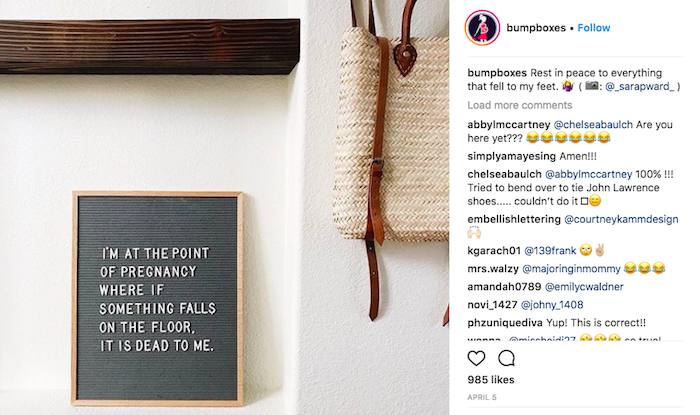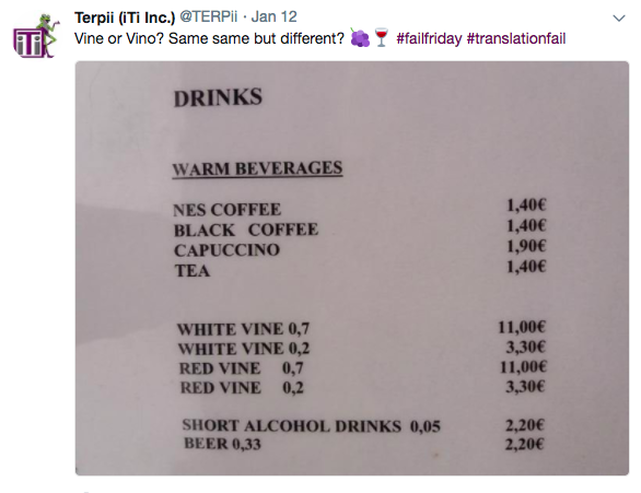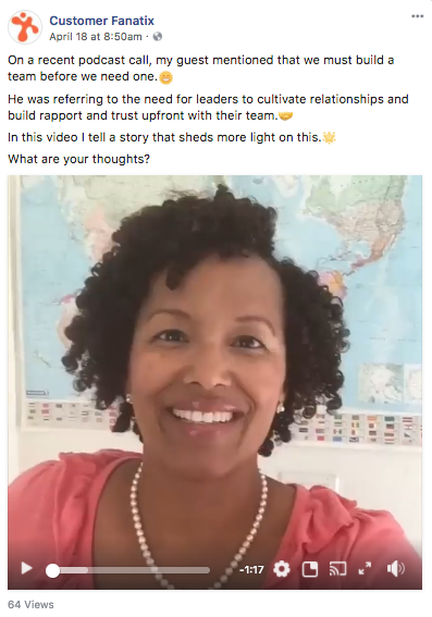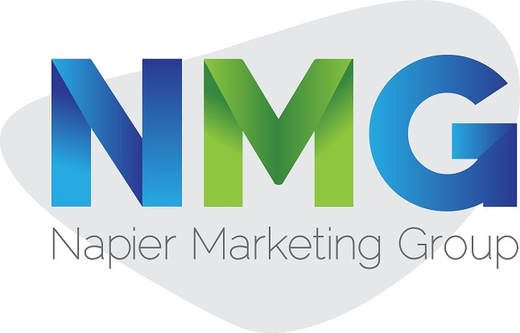HOW SMALL BUSINESSES USE SOCIAL MEDIA IN 2018 -PART 2
read part 1 here
Nearly all small businesses plan to invest more time and money in social media, and most want to invest more in Facebook, a trend that is likely to continue.
As of 2017, 81% of the U.S. population uses social media, a number that grows each year.
Given this fact, it makes sense that most businesses are increasing their investment in social media in order to reach these consumers.
The Manifest surveyed 351 small business owners and managers at companies from across the U.S. with fewer than 500 employees to learn about small business investment in social media.
Small businesses can use this report to learn how other businesses invest in social media and to gain inspiration for their own social media strategies.
As of 2017, 81% of the U.S. population uses social media, a number that grows each year.
Given this fact, it makes sense that most businesses are increasing their investment in social media in order to reach these consumers.
The Manifest surveyed 351 small business owners and managers at companies from across the U.S. with fewer than 500 employees to learn about small business investment in social media.
Small businesses can use this report to learn how other businesses invest in social media and to gain inspiration for their own social media strategies.
our findings
|
|
- Almost half (46%) of small businesses use paid social media advertising and are shifting their budget from more traditional forms of marketing.
- Small businesses use a variety of resources for help with their social media efforts, including in-house staff (53%), social media management software (33%), freelancers/consultants (33%), and digital marketing or social media marketing agencies (24%).
- Larger companies are more likely to invest in social media. Almost all (85%) businesses with more than 51 employees invest in social media, while 58% of businesses with 1 employee invest in it.
Most Small Businesses Will Increase Investment in Social Media
Social media is increasingly important for small businesses, and most companies plan to invest more in social media this year.
Ninety-two percent (92%) of small businesses plan to increase their investment in at least one social media platform in 2018.
The number of businesses investing in social media is increasing every year.
“More companies see the importance of social media, so more are starting to invest in it,” said Shawn Alain, president of social media agency Viral in Nature. “That number will keep going up.”
Businesses see the necessity of social media in today’s marketplace.
Most small businesses plan to increase investment in Facebook (58%), YouTube (39%), Instagram (39%), and Twitter (32%).
Other companies plan to increase investment in Google+ (31%), Snapchat (21%), and LinkedIn (18%).
For example, online retailer The Jacket Maker uses Facebook, Instagram, Pinterest, LinkedIn, and Reddit and plans to increase its social media investment this year because of the success it has found with this technology.
Nearly 25,000 people have viewed a video about its jackets, and its Facebook page has almost 200,000 followers.
Ninety-two percent (92%) of small businesses plan to increase their investment in at least one social media platform in 2018.
The number of businesses investing in social media is increasing every year.
“More companies see the importance of social media, so more are starting to invest in it,” said Shawn Alain, president of social media agency Viral in Nature. “That number will keep going up.”
Businesses see the necessity of social media in today’s marketplace.
Most small businesses plan to increase investment in Facebook (58%), YouTube (39%), Instagram (39%), and Twitter (32%).
Other companies plan to increase investment in Google+ (31%), Snapchat (21%), and LinkedIn (18%).
For example, online retailer The Jacket Maker uses Facebook, Instagram, Pinterest, LinkedIn, and Reddit and plans to increase its social media investment this year because of the success it has found with this technology.
Nearly 25,000 people have viewed a video about its jackets, and its Facebook page has almost 200,000 followers.
|
For example, online retailer The Jacket Maker uses Facebook, Instagram, Pinterest, LinkedIn, and Reddit and plans to increase its social media investment this year because of the success it has found with this technology.
Nearly 25,000 people have viewed a video about its jackets, and its Facebook page has almost 200,000 followers. Social media helps consumers learn about The Jacket Maker. “We are a fashion brand without any physical store presence, so social media automatically becomes the most essential channel to bring authenticity to a brand like ours,” said Saud Ibrahim, digital marketing manager at The Jacket Maker. “A lot of traffic to our website and sales comes from social media.” Social media helps potential customers learn about and see the legitimacy of The Jacket Maker. |
Small Businesses Plan to Increase Facebook Investment
Facebook remains the most valued platform for small businesses.
More than half (58%) of small businesses plan to increase their investment in Facebook, more than any other platform. This makes sense because Facebook is by far the most popular social media platform for consumers – 1.45 billion people worldwide log on to Facebook each day.
Earlier in 2018, Facebook announced that Cambridge Analytica gathered information on 87 million users without their knowledge.
Some consumers may deactivate their Facebook accounts because of the scandal, but small businesses still see Facebook as an important tool to market themselves.
“Facebook’s usership may dip slightly because individuals will choose not to use the platform after news of the Facebook Cambridge Analytica situation, but the platform still remains a key player in building relationships with customers,” said Charlotte Chipperfield, CEO of social media agency Chipperfield Media.
Small businesses still see the importance of Facebook in connecting with customers.
More than half (58%) of small businesses plan to increase their investment in Facebook, more than any other platform. This makes sense because Facebook is by far the most popular social media platform for consumers – 1.45 billion people worldwide log on to Facebook each day.
Earlier in 2018, Facebook announced that Cambridge Analytica gathered information on 87 million users without their knowledge.
Some consumers may deactivate their Facebook accounts because of the scandal, but small businesses still see Facebook as an important tool to market themselves.
“Facebook’s usership may dip slightly because individuals will choose not to use the platform after news of the Facebook Cambridge Analytica situation, but the platform still remains a key player in building relationships with customers,” said Charlotte Chipperfield, CEO of social media agency Chipperfield Media.
Small businesses still see the importance of Facebook in connecting with customers.
|
For example, Heartland Funding Inc., a cash buyer for residential real estate in Illinois, plans to increase its investment in Facebook this year. “Even with Facebook’s recent problems in the media, we are not backing off, but we are ramping up our exposure with Facebook,” Heartland Funding President Don Wede said. Heartland Funding uses Facebook to retarget consumers who have visited its website. Facebook helps small businesses like Heartland Funding reach consumers, and despite its recent scandal, businesses will continue to invest in the platform. |
Small Businesses Value Engagement Most
Small businesses want to increase their investment in social media because it leads to more successful metrics, such as engagement, audience growth, and clicks to their website.
The most important metric small businesses use for tracking the success of its social media efforts is engagement (20%).
Engagement is important because it shows businesses that their followers are interested in what they have to say.
“Engagement is absolutely the best metric to track,” Alain said. “You can have a million followers, but if you’re getting no engagement, you’ve got nothing. You need engagement to succeed on social media.”
Businesses can’t have a successful social media strategy without engagement.
The most important metric small businesses use for tracking the success of its social media efforts is engagement (20%).
Engagement is important because it shows businesses that their followers are interested in what they have to say.
“Engagement is absolutely the best metric to track,” Alain said. “You can have a million followers, but if you’re getting no engagement, you’ve got nothing. You need engagement to succeed on social media.”
Businesses can’t have a successful social media strategy without engagement.
|
For example, pregnancy subscription box service Bump Boxes relies on engagement to spread brand awareness.
Bump Boxes’ followers often tag others in comments, which helps more consumers learn about the brand. “Brand awareness is so important for a growing business, and we understand that doesn’t always turn into immediate sales but can take some time until the consumer is ready,” said Bump Boxes Marketing Communications Manager Amanda Anderson. “Seeing those likes, comments, and in turn, followers is a huge validator that our content is working.” |
High engagement doesn’t immediately lead to a sale, but engaged customers keep the company in mind when it is time to make a purchase.
Half of Small Businesses Use Paid Social Advertising
A growing number of small businesses see paid social media advertising as a valuable marketing tool.
Just under half (46%) of small businesses use paid social advertising.
As social media’s popularity has increased, so has the number of small businesses advertising on social media channels. Businesses likely now must pay to make their content stand out from the crowd on social media.
“Social media advertising has become more common place,” said Darren Cabral, CEO of social media marketing agency Suits Social. “Social media is a pay-to-play game now. Fewer businesses are putting out door hangers and flyers. That money is going to go somewhere, and … they use it for social media.”
Many small businesses have shifted their marketing budget to social media advertising because more traditional forms of marketing have become less important.
Just under half (46%) of small businesses use paid social advertising.
As social media’s popularity has increased, so has the number of small businesses advertising on social media channels. Businesses likely now must pay to make their content stand out from the crowd on social media.
“Social media advertising has become more common place,” said Darren Cabral, CEO of social media marketing agency Suits Social. “Social media is a pay-to-play game now. Fewer businesses are putting out door hangers and flyers. That money is going to go somewhere, and … they use it for social media.”
Many small businesses have shifted their marketing budget to social media advertising because more traditional forms of marketing have become less important.
|
For example, Allegory Gallery, a bead, jewelry, and artwork store in Ligonier, Pa., now depends on social media advertising to reach consumers. Instead of advertising in print media, Allegory Gallery now advertises on social media to promote itself and its events. “When we first started the company seven years ago, we put more resources toward traditional print media,” said Andrew Thornton, Allegory Gallery co-owner, co-founder, and creative director. “What we discovered is that people are consuming media differently these days, and to better reach our customers, we had to have an increased social media presence.” Allegory Gallery shifted its focus from print media advertising to social media advertising. |
“We find that by advertising on social media, we are better able to directly interact with customers,” Thornton said. “Even if a company has the means to only use traditional advertising, it is missing a huge population who uses social media platforms to inform their buying habits.”
Companies that choose not to advertise on social media are missing out on potential customers.
Allegory Gallery’s business model is so successful that SCORE’s American Small Business Championship recently recognized the boutique as one of the top small businesses in the country, a feat it was able to achieve with social media advertising.
Companies that choose not to advertise on social media are missing out on potential customers.
Allegory Gallery’s business model is so successful that SCORE’s American Small Business Championship recently recognized the boutique as one of the top small businesses in the country, a feat it was able to achieve with social media advertising.
Small Businesses Rely on a Variety of Resources for Social Media
Small businesses use a variety of resources for help with their social media strategies.
Most small businesses use in-house staff (53%), and many use social media management software (33%), freelancers or consultants (33%), and digital marketing or social media marketing agencies (24%).
Resources beyond in-house staff can help small businesses implement a successful social media strategy.
“I generally advise that businesses use an outside resource for strategy, especially small businesses,” said Jeff Gibbard, chief social strategist at digital agency I’m From the Future. “The average small business simply does not have the time to keep up with the speed and complexity of social media and advertising changes while also running its business. An outside strategist can provide the right direction, ultimately saving the business time and money.”
Outside resources can provide small businesses the time and manpower needed for social media marketing.
Most small businesses use in-house staff (53%), and many use social media management software (33%), freelancers or consultants (33%), and digital marketing or social media marketing agencies (24%).
Resources beyond in-house staff can help small businesses implement a successful social media strategy.
“I generally advise that businesses use an outside resource for strategy, especially small businesses,” said Jeff Gibbard, chief social strategist at digital agency I’m From the Future. “The average small business simply does not have the time to keep up with the speed and complexity of social media and advertising changes while also running its business. An outside strategist can provide the right direction, ultimately saving the business time and money.”
Outside resources can provide small businesses the time and manpower needed for social media marketing.
|
Relying on a variety of resources helps companies succeed with social media and create a successful and consistent strategy, like that of Interpreters and Translators, Inc. (iTi), a translation and interpretation service provider.
“We feel that consistency is crucial to a successful social media strategy,” Marketing Coordinator Annie Pagano said. “Consistency in the type of content we produce and share, consistency with our brand voice and image, and consistency with our frequency of posting.” Every Friday, for example, iTi posts a picture of a humorous translation “fail.” Being consistent with content lets followers know when to expect another #failfriday and makes social media easier to manage and more effective. |
Being consistent with content lets followers know when to expect another #failfriday and makes social media easier to manage and more effective.
Larger Businesses Invest in Social Media More
Larger Companies More Likely to Use Social Media Advertising
The larger a company is, the more likely it is to use and invest in social media.
Eighty-five percent (85%) of businesses with more than 51 employees invest in social media.
Just over half (58%) of businesses with one employee invest in social media.
Smaller businesses are less likely to have the human and financial resources to invest in social media.
“When you have one or two people in your company, your focus is on the business surviving,” Cabral said. “You probably don’t have the money to hire an agency, and you don’t have the time to take it on yourself. These small businesses aren’t thinking about social media, but they need to be.”
Smaller business owners are focusing on what they see as more important tasks to keep their company running, but they should also focus on social media.
Although larger businesses are more likely to invest in social media, smaller businesses can also find success with this technology.
Eighty-five percent (85%) of businesses with more than 51 employees invest in social media.
Just over half (58%) of businesses with one employee invest in social media.
Smaller businesses are less likely to have the human and financial resources to invest in social media.
“When you have one or two people in your company, your focus is on the business surviving,” Cabral said. “You probably don’t have the money to hire an agency, and you don’t have the time to take it on yourself. These small businesses aren’t thinking about social media, but they need to be.”
Smaller business owners are focusing on what they see as more important tasks to keep their company running, but they should also focus on social media.
Although larger businesses are more likely to invest in social media, smaller businesses can also find success with this technology.
|
For example, Heather Younger is the only employee at her leadership effectiveness and employee engagement consulting firm, Customer Fanatix. She relies on social media to grow her client base.
Younger frequently posts videos of herself, which shows her personality. For example, Heather Younger is the only employee at her leadership effectiveness and employee engagement consulting firm, Customer Fanatix. She relies on social media to grow her client base. Younger frequently posts videos of herself, which shows her personality. Larger Companies More Likely to Use Social Media AdvertisingBusinesses with more employees are also more likely to invest in paid social media advertising.
Almost three-fourths (74%) of businesses with more than 51 employees use paid social advertising, versus 30% of businesses with one employee. |
Smaller businesses only have the manpower to focus on short-term social media marketing goals. Using paid social media effectively often requires the ability to plan out posts and budget in the long-term.
“Paid social advertising is more of a long-term strategy,” Chipperfield said, “Many small businesses are not always thinking about advertising because they are maintaining the day-to-day on social media versus being able to step back and look at the larger strategy.”
Larger companies have more resources to invest in the long-term planning required for paid social media advertising.
“Paid social advertising is more of a long-term strategy,” Chipperfield said, “Many small businesses are not always thinking about advertising because they are maintaining the day-to-day on social media versus being able to step back and look at the larger strategy.”
Larger companies have more resources to invest in the long-term planning required for paid social media advertising.
Businesses Should Invest in Social Media
Social media is a part of consumers’ everyday lives, and companies are hard-pressed to find consumers who aren’t affected by social media in some way.
Ninety-two percent (92%) of small businesses plan to invest more in social media because it is a way to successfully reach consumers and spread brand awareness.
Most small businesses will increase their investment in Facebook in 2018, and almost half are shifting away from traditional advertising in favor of social media advertising.
Social media is an essential tool for business growth, and small businesses that don’t see social media as an important investment are losing out on potential customers.
Ninety-two percent (92%) of small businesses plan to invest more in social media because it is a way to successfully reach consumers and spread brand awareness.
Most small businesses will increase their investment in Facebook in 2018, and almost half are shifting away from traditional advertising in favor of social media advertising.
Social media is an essential tool for business growth, and small businesses that don’t see social media as an important investment are losing out on potential customers.
About the Survey
The Manifest surveyed 351 small business owners or managers from across the U.S. with fewer than 500 employees.
Fifteen percent (15%) of businesses have 1 employee, 40% 2 to 10 employees, 23% 11 to 50 employees, 16% 51 to 250 employees, and 6% 251 to 500 employees.
More than half (57%) of respondents had a revenue of less than $1 million in 2017.
Fifteen percent (15%) of businesses have 1 employee, 40% 2 to 10 employees, 23% 11 to 50 employees, 16% 51 to 250 employees, and 6% 251 to 500 employees.
More than half (57%) of respondents had a revenue of less than $1 million in 2017.











